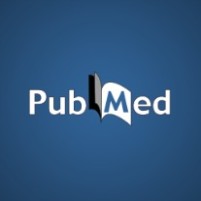Editors
Institute for Quality and Efficiency in Health Care.
Source
Cologne, Germany: Institute for Quality and Efficiency in Health Care (IQWiG); 2012 Mar. Extract of Dossier Assessment No. A12-01.
IQWiG Dossier Assessment Extracts.
 Excerpt
Excerpt
In the following, “extract from Cannabis sativa” will be referred to by “THC/CBD”. The present benefit assessment of THC/CBD was carried out for the approved therapeutic indication: “…symptom improvement in patients with moderate to severe spasticity due to multiple sclerosis (MS) who have not responded adequately to other anti-spasticity medication and who demonstrate clinically significant improvement in spasticity related symptoms during an initial trial of therapy” (Summary of Product Characteristics). According to the SPC, THC/CBD is intended to be used as add-on treatment to the patient’s previous anti-spasticity medication. The benefit assessment was carried out in comparison with the appropriate comparator therapy (ACT) specified by the Federal Joint Committee (G-BA). This is the optimized standard therapy with baclofen or tizanidine, or drugs approved for the treatment of spasticity in underlying neurological disease, taking into account the approved dosages. At least 2 previous trials of therapy were to have taken place, in each of which different oral spasmolytics – at least one of which had to be a product containing baclofen or tizanidine – were used in an optimum way. The aim of this report is therefore to assess the added benefit of THC/CBD in comparison with an optimized standard therapy (as specified by the G-BA) in patients with spasticity due to MS (as described in the approval status). The company deviated from the ACT specified by the G-BA. At first it designated the continuation of the individual previous medication as the ACT. In justifying its choice of the ACT, the company widened its definition of the ACT on the basis of the assumption that an optimized therapy could be presumed in chronically pre-treated patients. It designated the continuation of the previous optimized anti-spasticity medication as the ACT. According to the company, the previous therapy results from the sum of the percentage proportions of all the drugs approved for the indication of THC/CBD that were administered to patients. With both definitions, the company deviated from the G-BA’s specification of the ACT. However, these deviations are not adequately justified.
Copyright © 2012 by the Institute for Quality and Efficiency in Healthcare (IQWiG).
Copyright © 2012 by the Institute for Quality and Efficiency in Healthcare (IQWiG).
KEYWORDS:
cannabinoids; multiple sclerosis; Benefit assessment

